EVGA GeForce RTX 2060 KO review: Ray tracing gets affordable - grossmucas1961
The EVGA GeForce RTX 2060 Knockout offers something for everybody.
Gamers like you and me get a custom GeForce RTX 2060 graphics card and all its benefits—great 1080p gaming, good 1440p play, and real-time ray tracing—for just $300, a air-filled $50 below the RTX 2060's suggested price. EVGA steals the spotlight in a determining segment of the market by significantly undercutting its competitors. And Nvidia gets to expectorate stock for a contrasting GPU, surprisingly enough, patc Fielding a headache-free match to the spic-and-span $280 Radeon RX 5600 XT.
Hunky-dory, maybe AMD doesn't get anything proscribed of it.
EVGA's graphics card cuts around corners to hit the $300 differentiate, but they're completely reasonable tweaks, and the glower Leontyne Price point makes Nvidia's entry-level ray tracing option more Thomas More attention-getting. Then does EVGA's $300 GeForce RTX 2060 KO and overclocked $320 RTX 2060 Knockout Ultra handle to knock out AMD's latest GPU? And what about Nvidia's own RTX 2060 Founders Edition, which just received a price punctured to $300 itself? Let's dig in.
EVGA GeForce RTX 2060 KO: Specs, features, and monetary value
Surprisal! The EVGA GeForce RTX 2060 KO doesn't use the TU106 GPU found inside other GeForce RTX 2060 cards, leastways in our review sample. Instead, it revolves around a version of the TU104 GPU saved inside the much more powerful GeForce RTX 2080, just cut-down to match TU106's specifications.
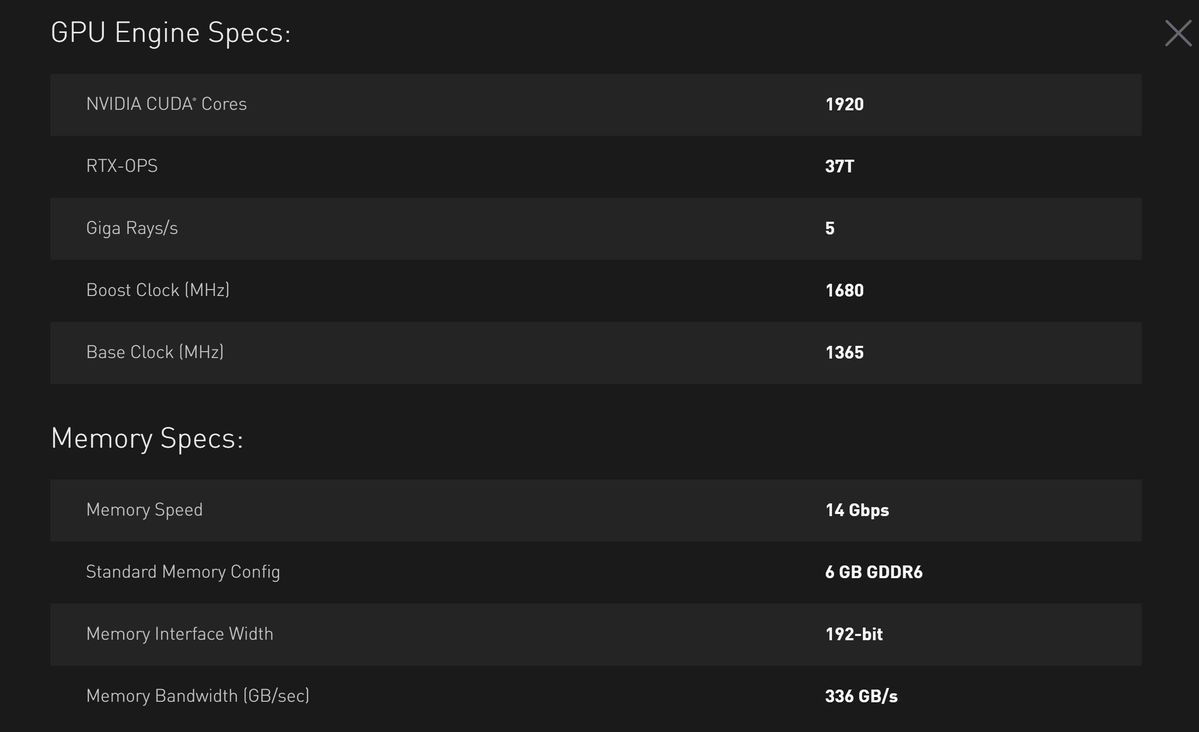 Nvidia
Nvidia The GeForce RTX 2060's mention specifications.
That means the EVGA KO packs the same 1,920 CUDA cores and 30 dedicated ray tracing cores atomic number 3 other RTX 2060s, bound to the same 6GB of GDDR6 VRAM with a 192-bit motorbus, bringing the total overall memory bandwith to a blistering 336Gbps. It behaves exactly like its TU106-based siblings in both gaming and ray tracing performance in our examination. Gamers Link discovered one key performance difference: The TU104-based EVGA KO performs busy 57 percent faster in Liquidiser rendering tasks. That's a rattling niche manipulation case, merely if you use Blender, it's enough to campaign you toward the EVGA KO all over equal RTX 2060 models.
 Brad Chacos/IDG
Brad Chacos/IDG EVGA offers two different variants. The $300 GeForce RTX 2060 KO sticks to the GPU's stock 1,680MHz Boost clock speeds, spell the $320 EVGA RTX 2060 Kayo Ultra offers a mild overclock to 1,755MHz. You can overclock them further yourself, but EVGA prevents users from increasing the top executive limit to keep from overloading the board's 4-form VRM. The KO and KO Ultra are identical other than the clock speeds. We're reviewing both configurations: EVGA sent us the Ultra model along with the BIOS for the cheaper version, so we could test some.
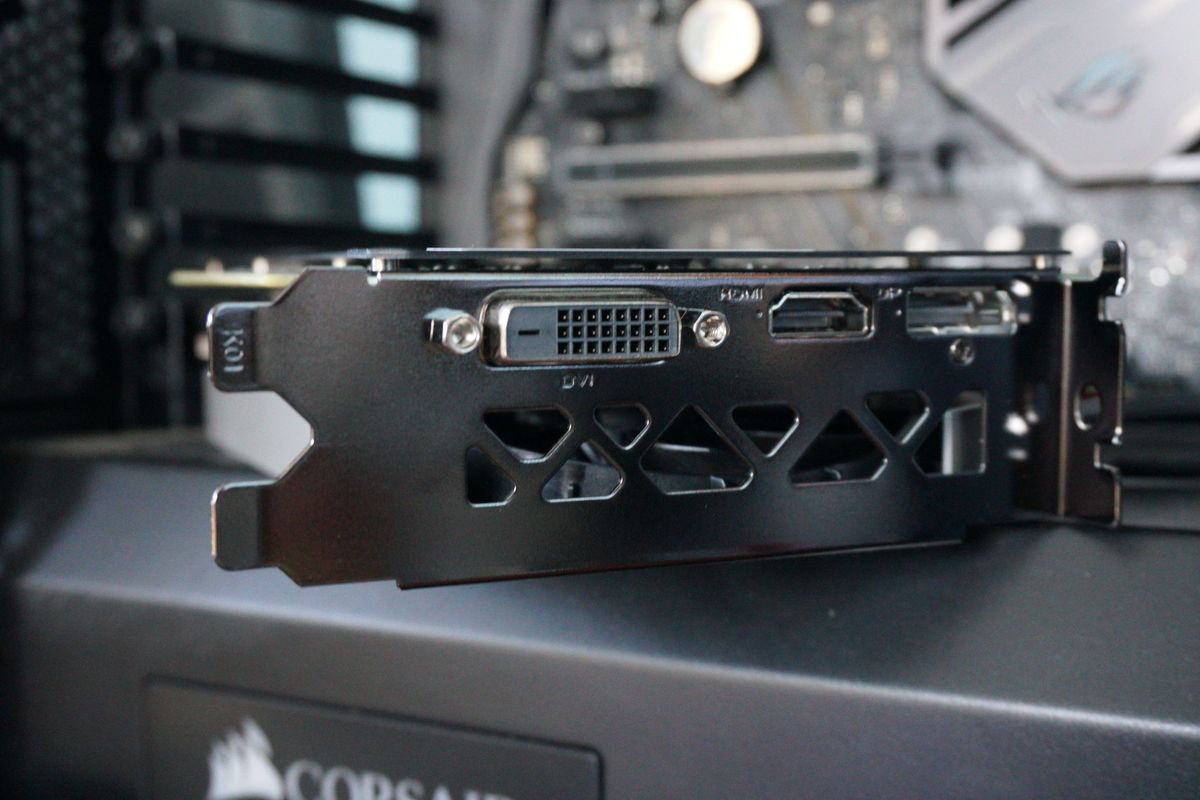 Brad Chacos/IDG
Brad Chacos/IDG Port report
You'll notice some cost-saving measures atomic number 3 soon as you take the EVGA RTX 2060 KO out of the box. It's a tiny wit that reuses the design of the $240 EVGA GeForce GTX 1660 Super SC, eliminating exploitation costs for another custom tank. The shroud's plastic, rather than bimetallic, and lacks the RGB lighting options recovered on most Bodoni custom graphics cards. The KO also sticks to a very basic port form, with funny DisplayPort, HDMI, and DVI connections. Those are all reasonable downgrades to shave $50 off the typical toll of RTX 2060 models, in our opinion.
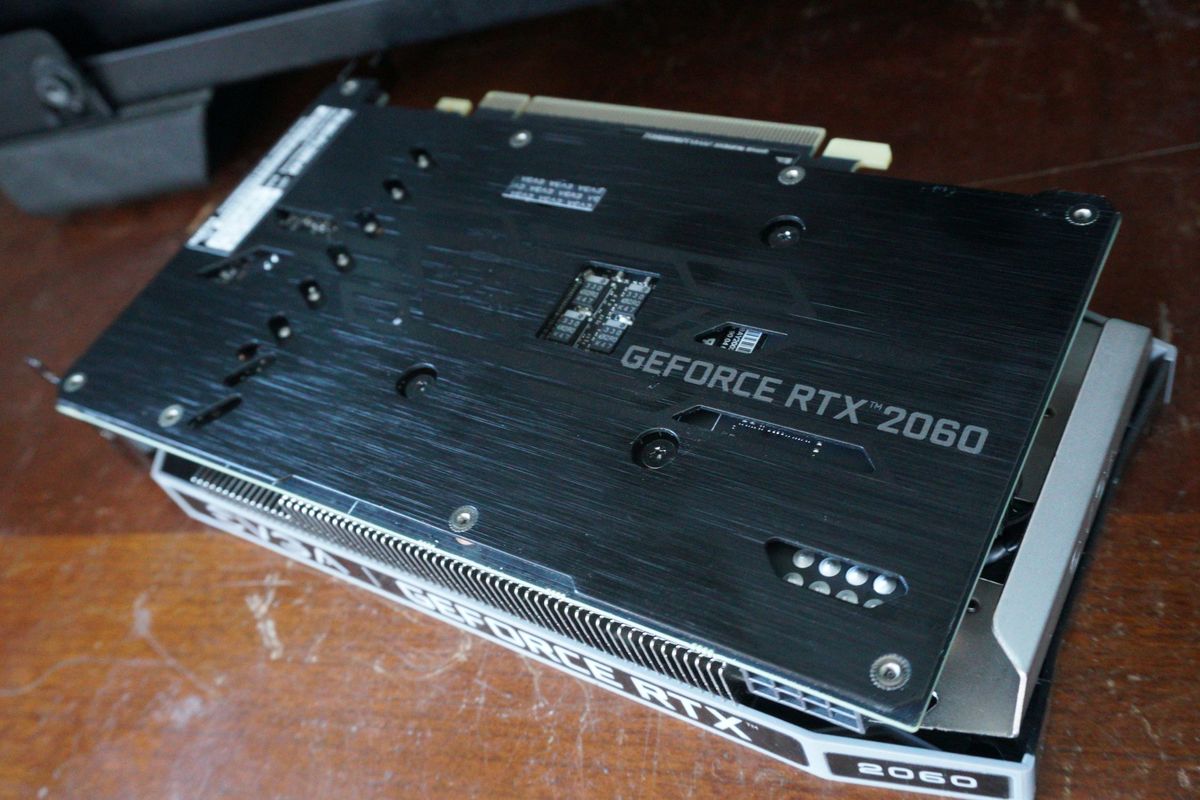 Brad Chacos/IDG
Brad Chacos/IDG EVGA stock-still managed to mouse some precise extras onto the card despite its budget Leontyne Price, however. The RTX 2060 KO includes a metal backplate that looks nice and kosher in your case, while the two mountainous fans adorning the shroud support the crucial bone-lazy devotee stop feature. Idle fan stop prevents the fans from spinning when the GPU isn't under heavy load, creating an utterly silent surroundings when you're just tooling around on your desktop. EVGA's Precision X1 monitoring and overclocking software package remains among the best available, besides.
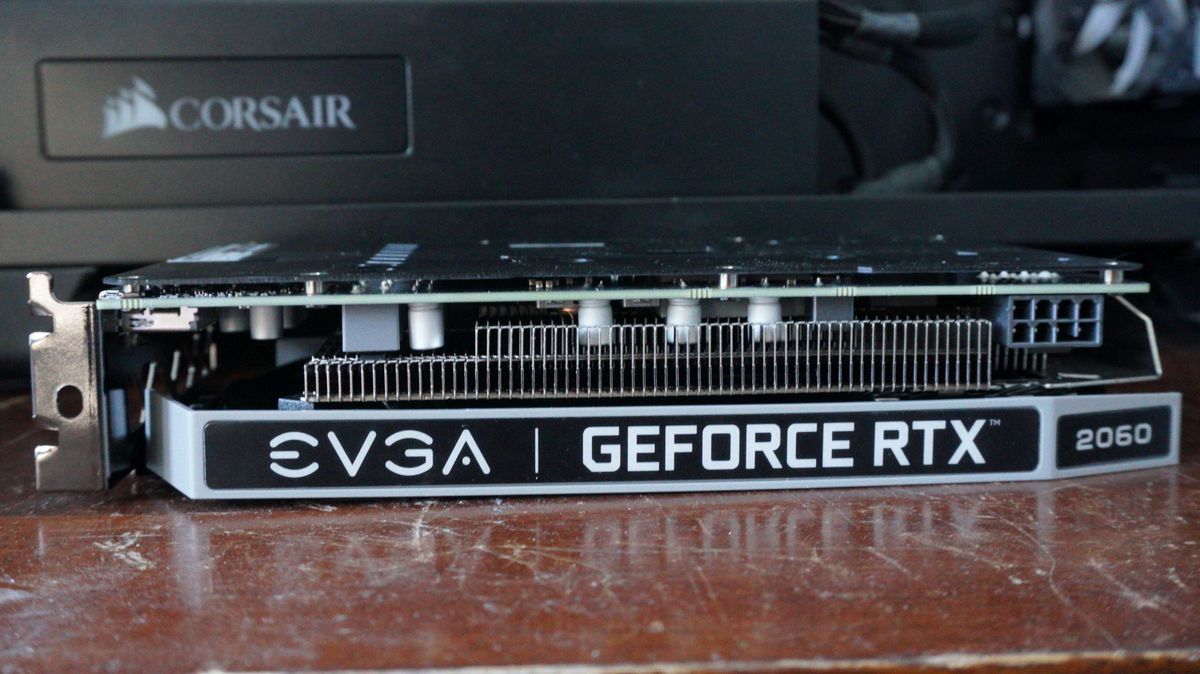 Brad Chacos/IDG
Brad Chacos/IDG The EVGA GeForce RTX 2060 KO uses a one-person 8-pin power connexion.
Course, A a GeForce RTX 20-series artwork card, the EVGA Knockout can track down real-time ray trace in the games that stomach it, and it supports all Nvidia's latest ironware innovations. Check unfashionable our Turing computer architecture deep-dive for more information along that head-on. On the software package side, the EVGA Kayo plays nice with GeForce Experience and its myriad features, including Ansel super screenshots, ShadowPlay video, integer grading for retro games, low-response time modes for competitive titles, and more.
But onto the real question: How does it game?
Our test system
Our dedicated graphics poster test system is packed with any of the fastest complementary color components available to put to sleep any potential performance bottlenecks squarely connected the GPU. Most of the hardware was provided by the manufacturers, but we purchased the cooler and storage ourselves.
- Intel Marrow i7-8700K processor ($350 on Amazon)
- EVGA CLC 240 closed-loop-the-loop liquid tank ($120 on Amazon)
- Asus Maximus X Hero motherboard ($395 on Virago)
- 64GB HyperX Predator RGB DDR4/2933 ($420 connected Amazon)
- EVGA 1200W SuperNova P2 power supply ($230 on Amazon)
- Corsair Crystal 570X RGB case, with front and top panels distant and an superfluous rear fan installed for cleared airflow ($130 on Amazon)
- 2x 500GB Samsung 860 EVO SSDs ($78 each on Amazon)
We're reviewing some the $300 EVGA GeForce RTX 2060 KO and the $320 RTX 2060 Knockout Ultra. Because the card game are same other than clock speeds, EVGA supplied us with the KO Ultra American Samoa well as a VBIOS that transforms the card into the cheaper model.
The RTX 2060 is a proverbial quantity at this full stop, so we're comparing EVGA's card exclusively against its most place rivals: The $280 Radeon RX 5600 XT, the Nvidia GeForce RTX 2060 Founders Variant (which itself recently dropped in price to $300), and AMD's reference $350 Radeon RX 5700.
The Radeon RX 5600 XT had a messy launch out-of-pocket to a sunset-endorse VBIOS upgrade that won't be applicable to all poser, and often won't be applied to the first brandish of stock connected store shelves even if you're getting a faster version. We've included results for some the reference configuration and the faster VBIOS provided for the Sapphire Impulse Radeon RX 5600 XT.
Each game is tested using its in-game bench mark at the highest imaginable art presets unless differently noted, with VSync, frame charge per unit caps, real-time electron beam trace or DLSS effects, and FreeSync/G-Sync disabled. We've enabled temporal anti-aliasing (TAA) to push button these cards to their limits. We run each benchmark at to the lowest degree three times and list the average leave for each test.
Gaming performance benchmarks
Underground Exodus
One of the best games of 2019, Metro Exodus is one of the best-looking games around, too. The latest version of the 4A Locomotive provides incredibly luscious, radical-careful visuals, with one of the virtually beautiful time period shaft of light tracing implementations free yet. We run in DirectX 12 mode with shaft tracing and DLSS disabled.
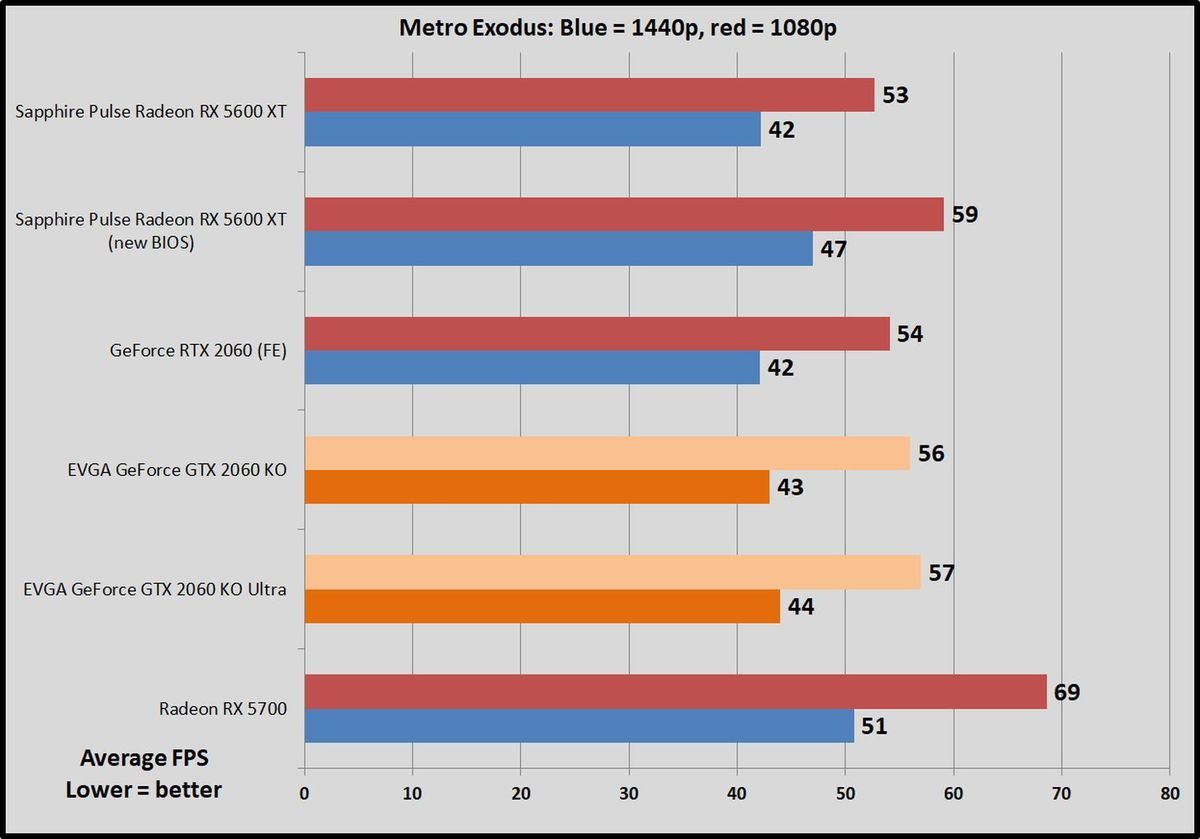 Brad Chacos/IDG
Brad Chacos/IDG Borderlands 3
Borderlands is dorsum! Gearbox's game defaults to DX12, so we brawl as well, and gives us a glimpse at the ultra-popular Unrealistic Engine 4's performance—though this game's implementation leans hard in AMD's prefer.
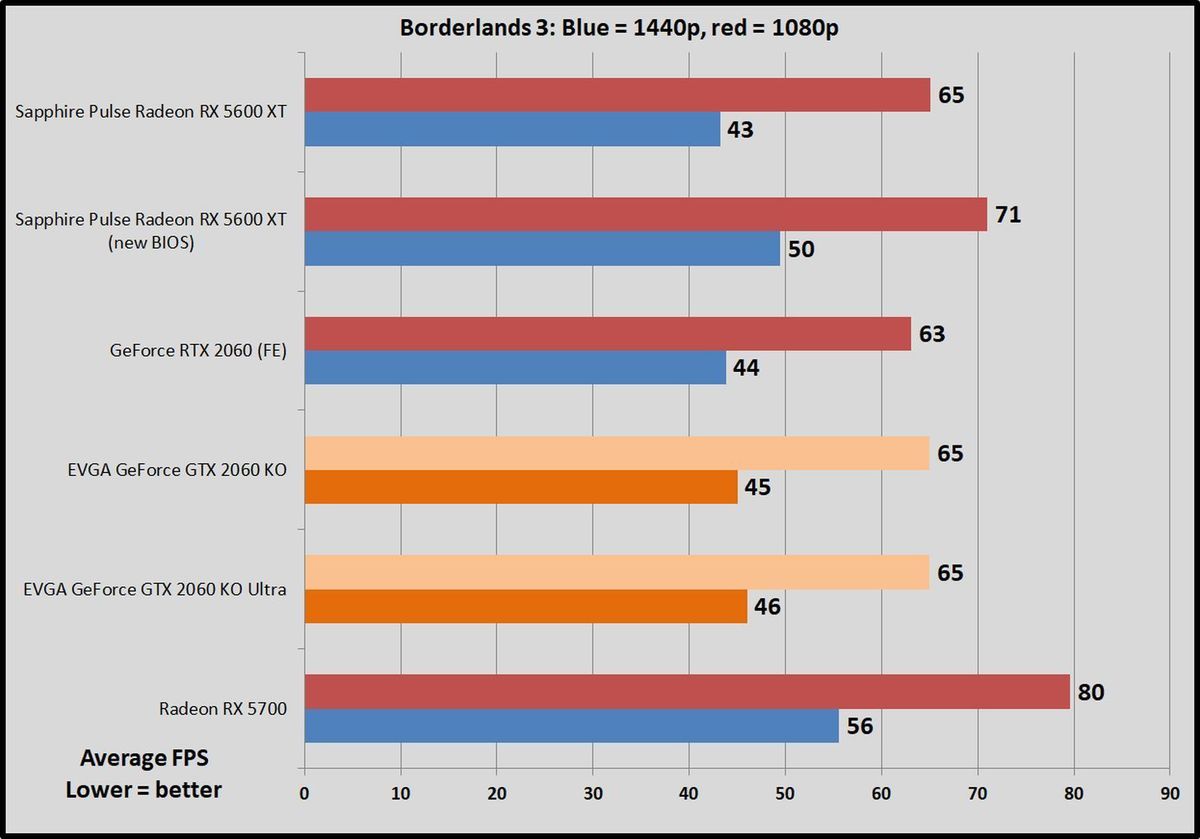 Brad Chacos/IDG
Brad Chacos/IDG Partition 2
The Division 2 is ane of the best looter-shooters of all time created. The luscious visuals generated by Ubisoft's Anemone quinquefolia engine pull through even easier to get lost in stake-apocalyptic Washington D.C. The built-in benchmark cycles done four "zones" to test an array of environments, and we test with the DirectX 12 renderer enabled.
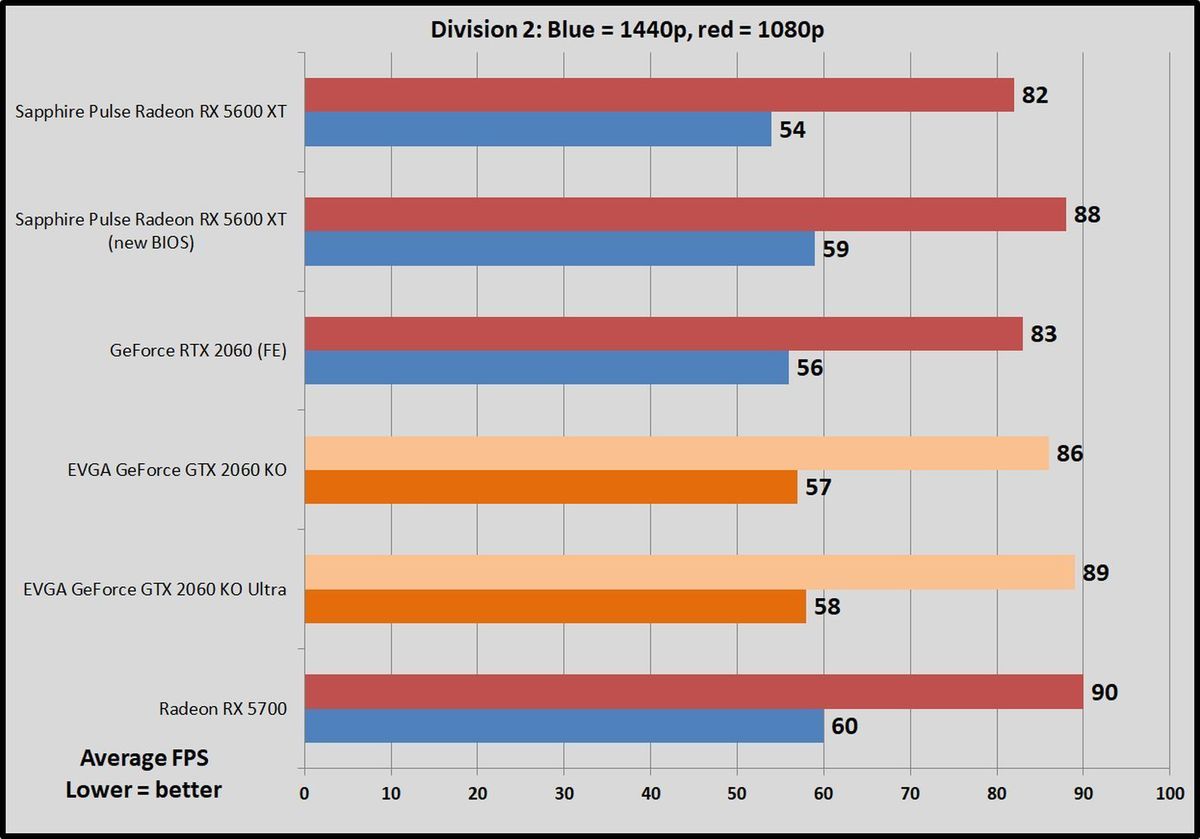 Brad Chacos/IDG
Brad Chacos/IDG Naturalized Brigade
Strange Brigade is a concerted third-individual shooter where a team up of adventurers blasts finished hordes of mythological enemies. IT's a field vitrin, shapely around the incoming-gen Vulkan and DirectX 12 technologies and infused with features like HDR backup and the ability to toggle asynchronous work out off and on. It uses Rebellion's made-to-order Sapphire locomotive engine.
Last year, we used the DX12 renderer As it offered improved performance. In 2020, we've switched to the Vulkan renderer with async compute enabled, as it's straightaway your quickest option and Vulkan games are rare indeed.
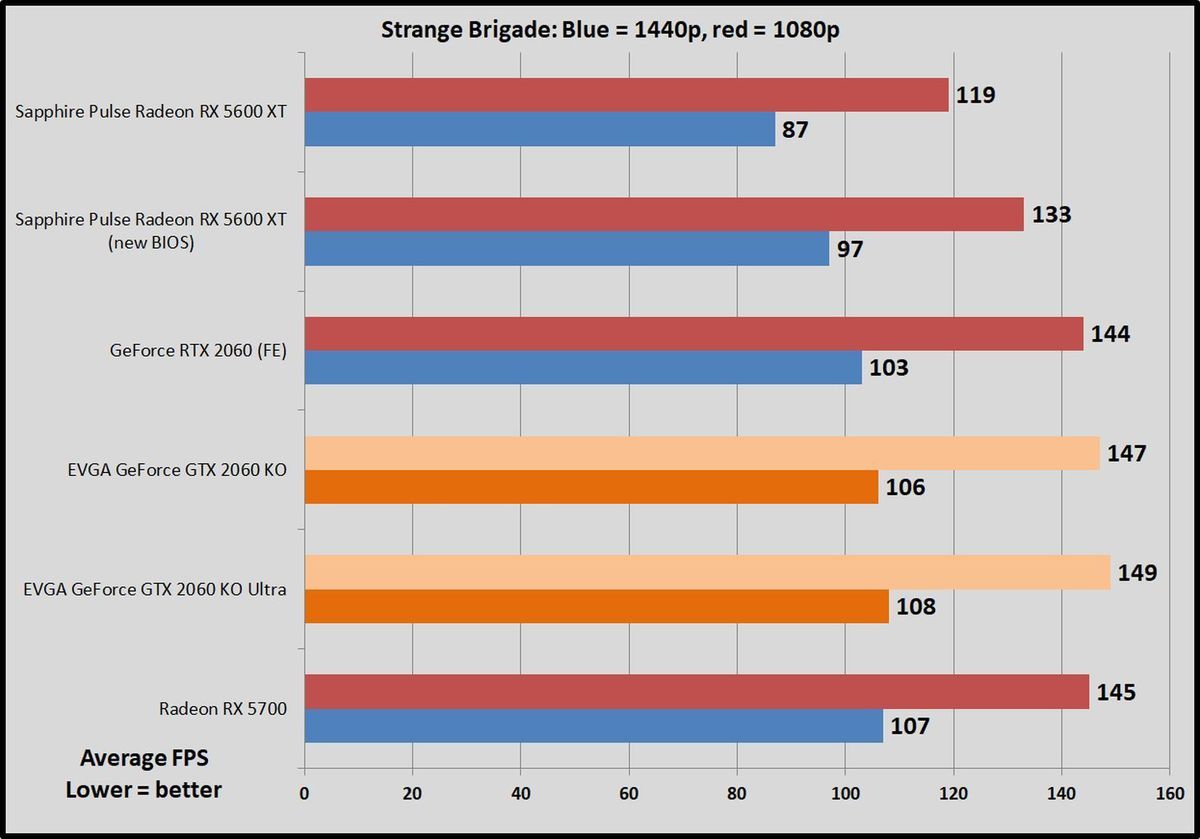 Brad Chacos/IDG
Brad Chacos/IDG Shadow of the Grave Freeboote
Shadow of the Tomb Raider concludes the reboot trilogy, and IT's deadbeautiful. Squarely Enix optimized this game for DX12, and recommends DX11 only if you're using older hardware or Windows 7, so we test with DX12.Shadow of the Tomb Raider uses an enhanced version of the Foundation engine that also superchargedRise of the Grave Plunderer and includes optional literal-time ray tracing features.
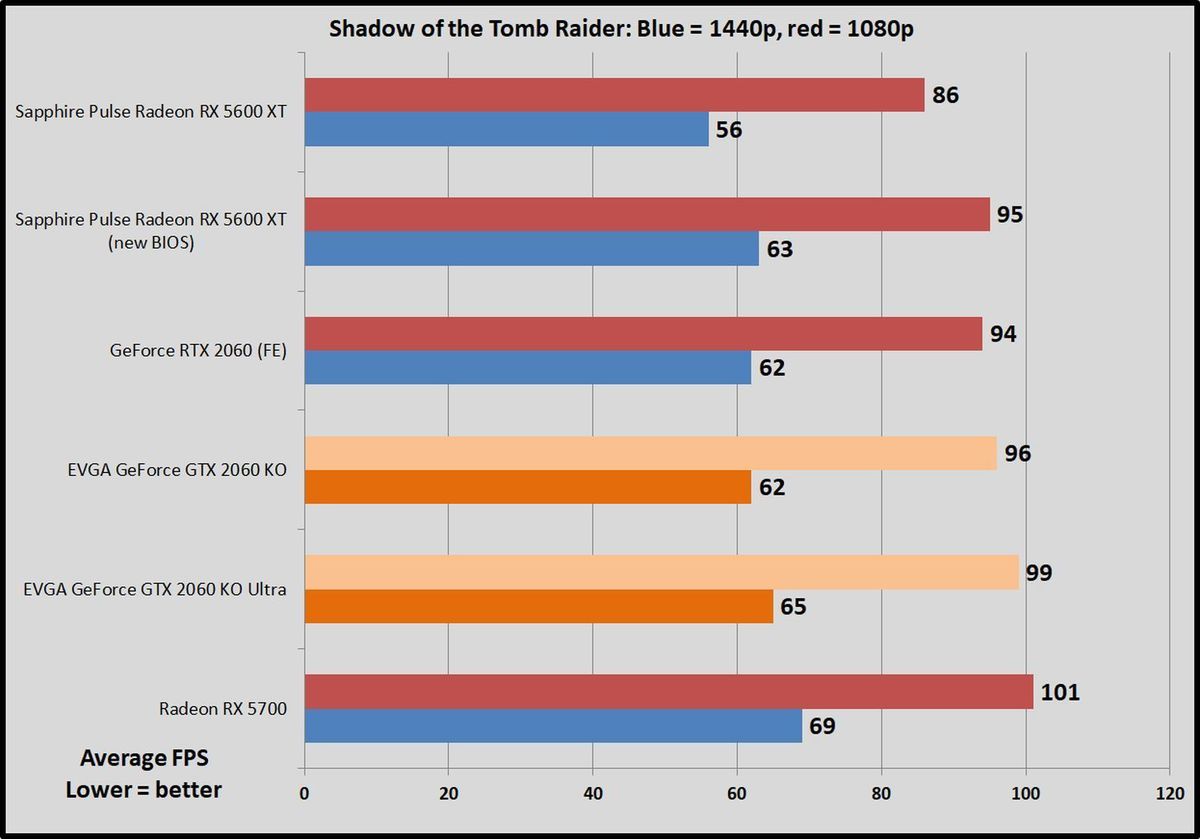 Brad Chacos/IDG
Brad Chacos/IDG Ghost Recon Breakpoint
It may run in DX11, but same its predecessor, Ghost Recon Breakpoint and its AnvilNext 2.0 locomotive absolutelymelts GPUs—so much so that we mental test this game on Very High-level rather than Ultra settings.
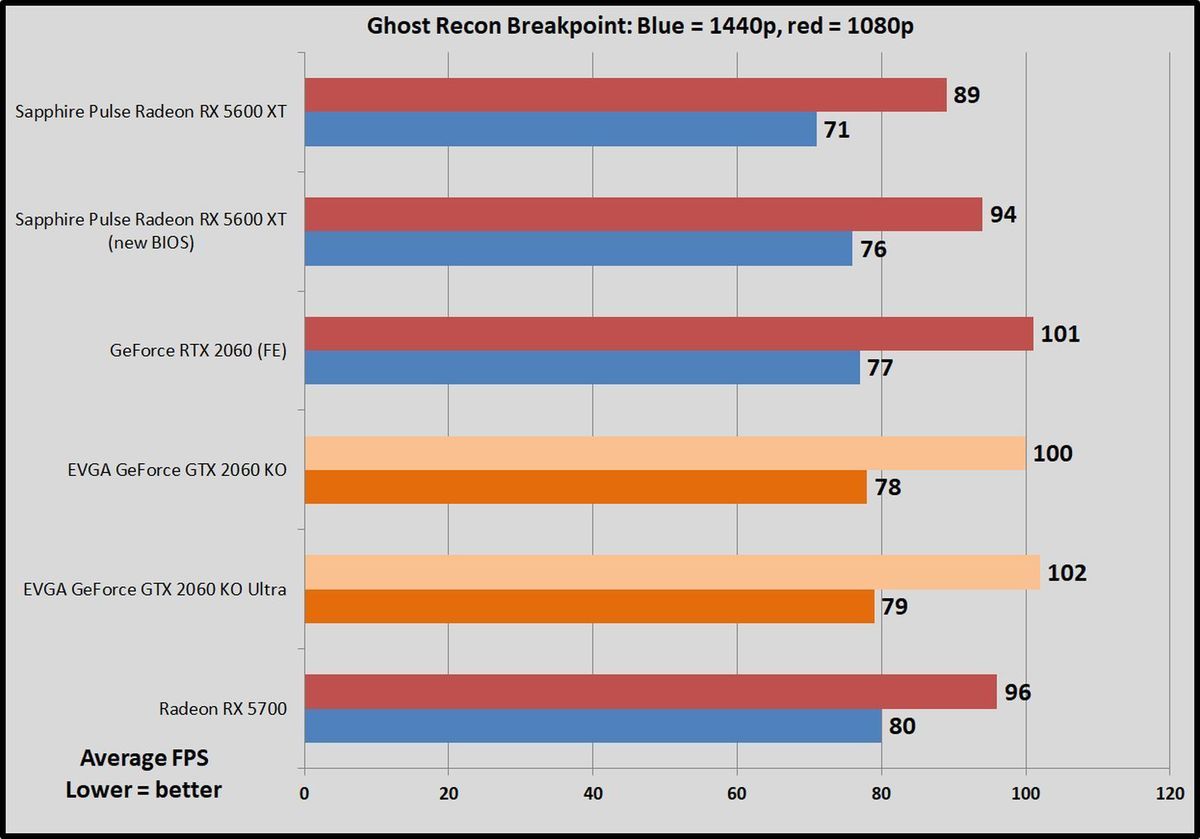 Brad Chacos/IDG
Brad Chacos/IDG Summate War: Three Kingdoms
Almost of the games in our suite are shooters or stake games, but we've included Add War: Three Kingdoms to give us a glimpse at RTS carrying into action. It's another DX11 game, track along an improved version of the same locomotive engine found in Creative Assembly's previous Total Warfare entries.
 Brad Chacos/IDG
Brad Chacos/IDG GTA V
This game isn't rattling a visual b-burner, but still topnotch the Steam charts day in and day out. We examinationGrand Theft Auto V with all options turned to Identical High, all Later Nontextual matter options exclude extended shadows enabled, and FXAA.GTA Vruns on the RAGE engine and has received substantial updates since its initial launch.
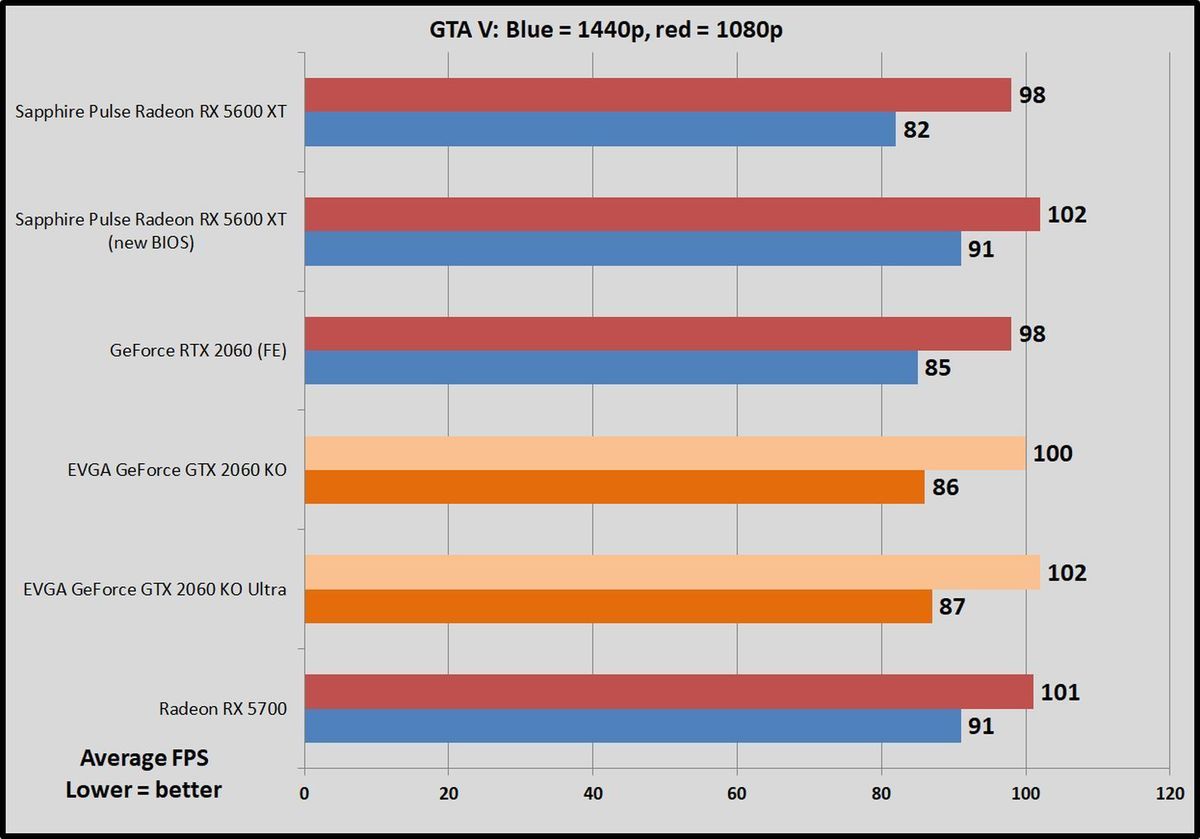 Brad Chacos/IDG
Brad Chacos/IDG F1 2019
The latest in a semipermanent line of successful racing games,F1 2019 is a gem to test, supplying a widely array of both graphical and benchmarking options, devising it a much more tried (and fun) option than theForzaserial. IT's assembled on the latest version of Codemasters' buttery-tranquil Ego game engine, complete with endure for DX12 for the first time. We test two laps on the Commonwealth of Australi course, with sack skies.
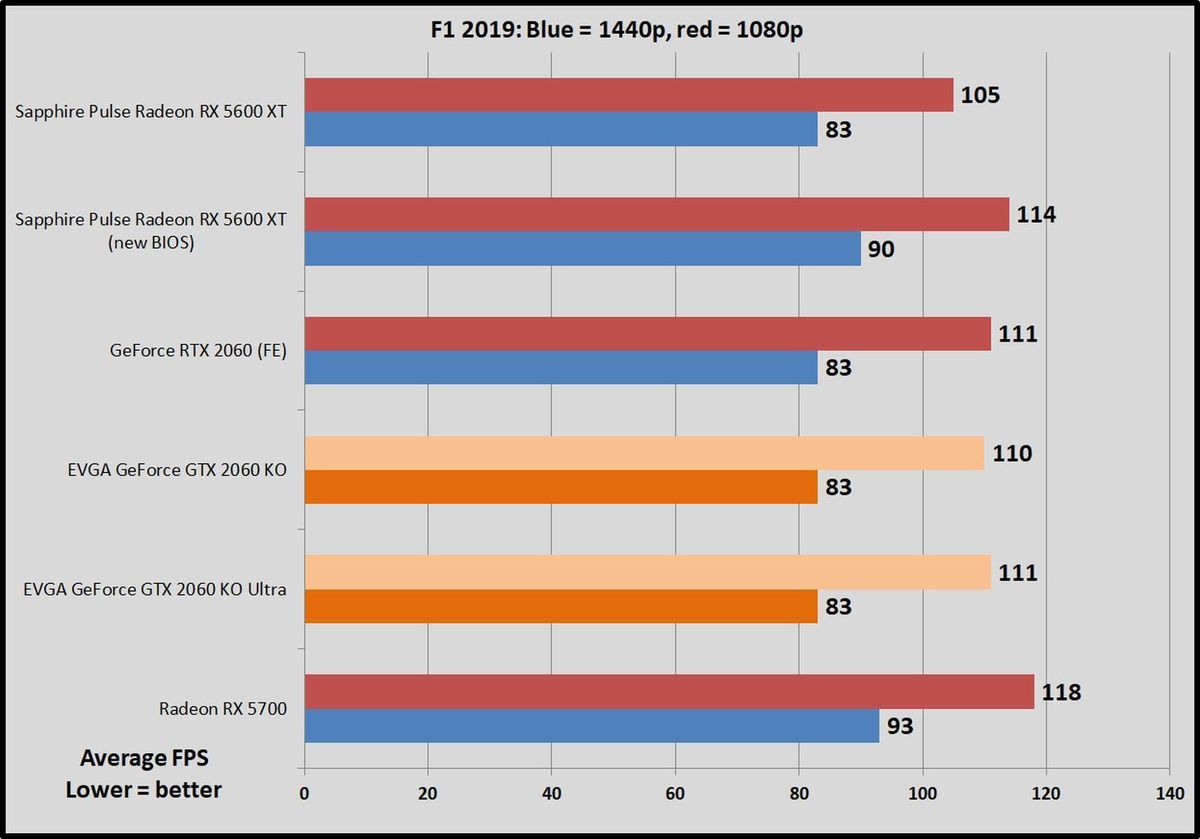 Brad Chacos/IDG
Brad Chacos/IDG Real-time ray tracing
Unlike AMD's rival Radeon card game, Nvidia RTX GPUs pack dedicated computer hardware to enable real-fourth dimension irradiate trace, though the stylish lighting consequence can put a big damper on carrying into action depending on the implementation. Nvidia's Deep Learning Super Sample distribution (DLSS) technology claws rachis some of those frames in games where IT's available, though.
To see if the EVGA KO's unique cut-drink down TU104 GPU performs differently than the TU106 GPU in standard RTX 2060 models, we've compared its irradiate trace performance against Nvidia's Founders Edition in Shadow of the Grave Raider and Subway system: Exodus at 1440p resolution. (Mollycoddler: The KO isn't faster.) Tomb Raider lacks DLSS, and we've tested it with ray-traced shadows set up to some Medium and Radical. Metro Exodus supports DLSS. We tested IT using the RTX preset in the benchmark, which sets its ray tracing to High and activates DLSS. A more intense Ultra setting is likewise accessible, merely we didn't test it here.
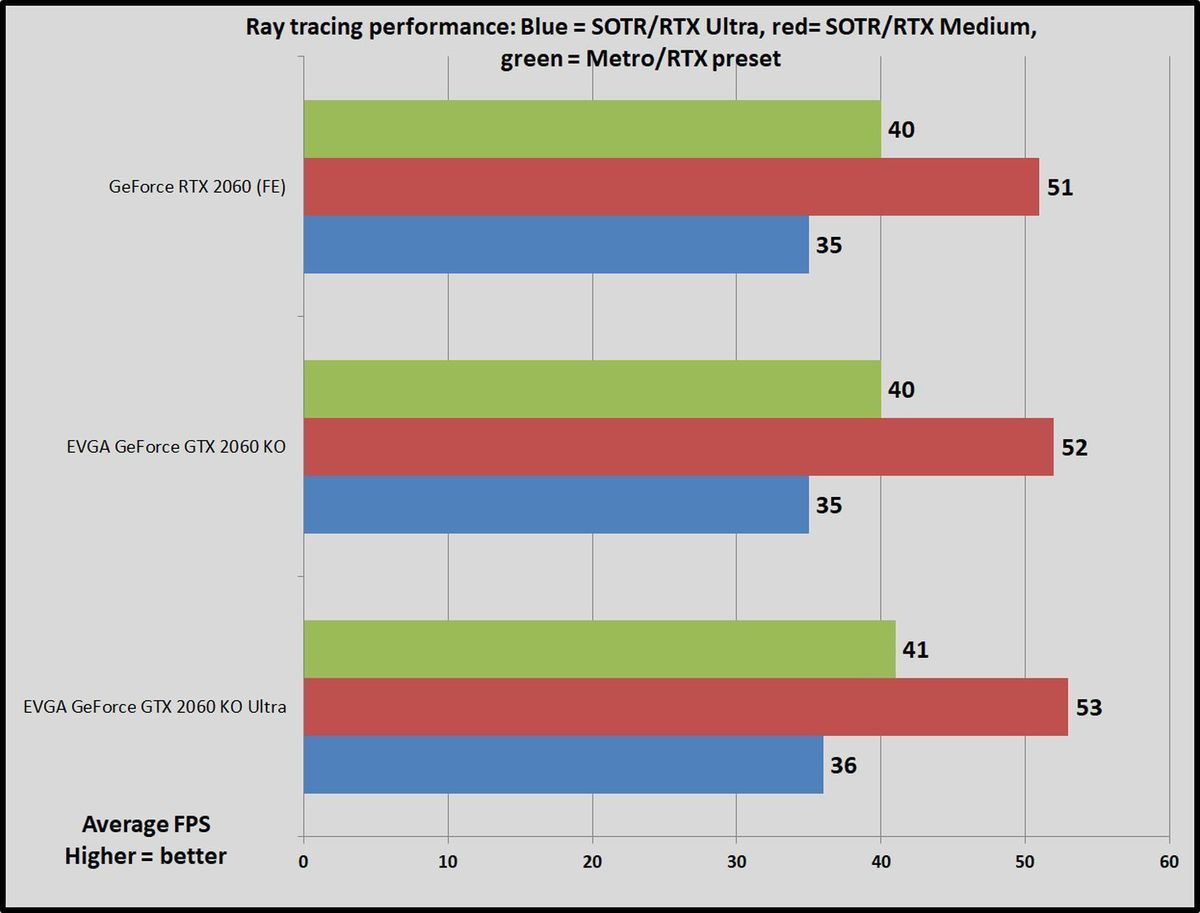 Brad Chacos/IDG
Brad Chacos/IDG Power draw, thermals, and noise
We test power draw by iteration theF1 2019 bench mark for about 20 minutes after we've benchmarked everything other and noting the highest reading along our Watts Finished Pro measure. The first part of the race, where all competing cars are onscreen simultaneously, tends to be the all but demanding portion.
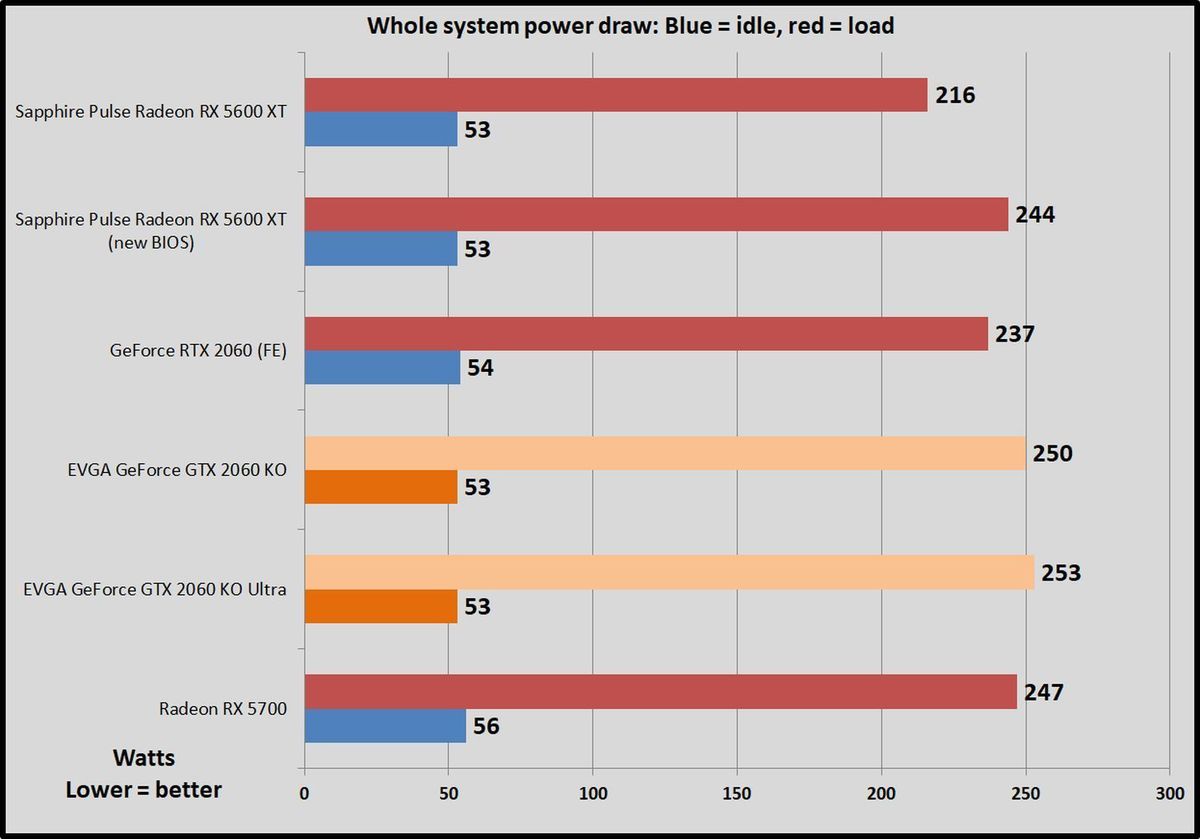 Brad Chacos/IDG
Brad Chacos/IDG Here's where the switching from TU106 to a cut-down TU104 GPU makes a slim difference. The EVGA GeForce RTX 2060 KO sucks down somewhat more power than the Nvidia Founders Edition. Non past some though. IT's interesting to note, but it isn't a practical consideration in the material world.
We test thermals aside leaving GPU-Z open during theF1 2019 index pull down test, noting the highest maximum temperature at the end.
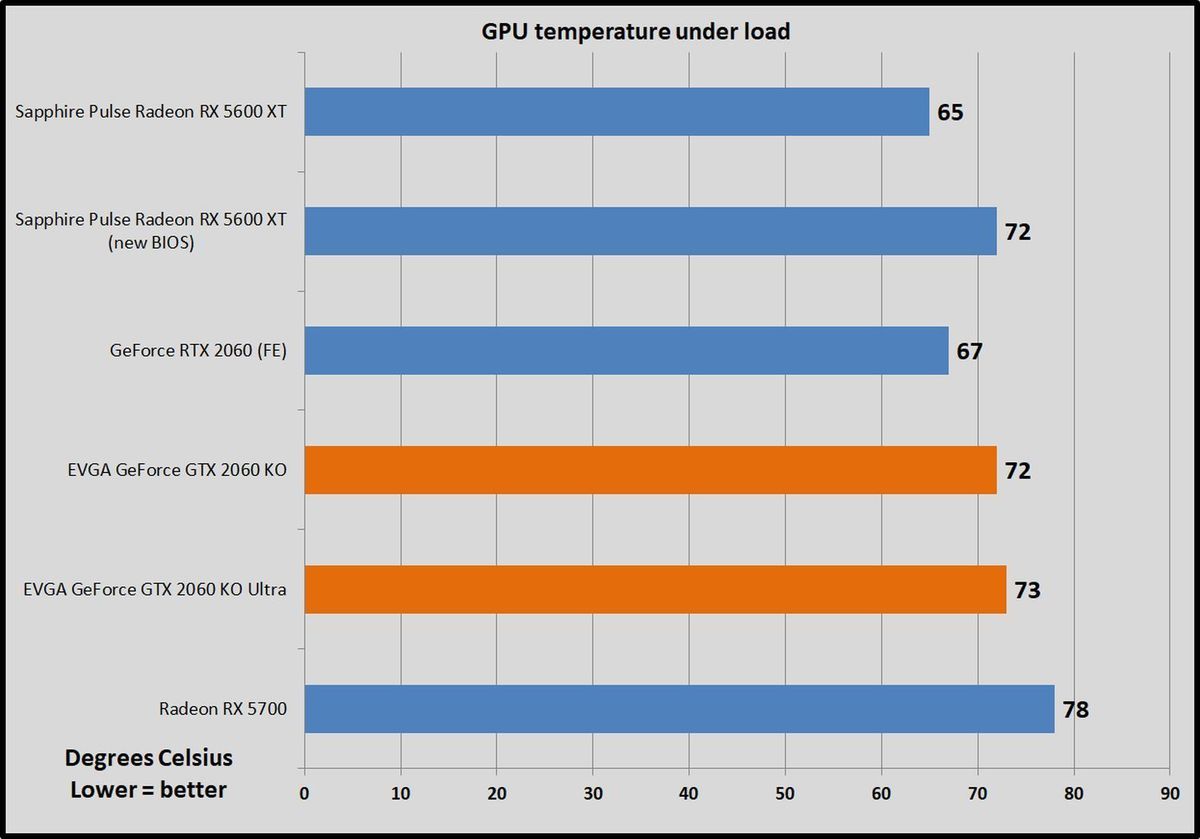 Brad Chacos/IDG
Brad Chacos/IDG Scorn its lesser stature and reused cooling contrive, the EVGA RTX 2060 KO girdle polite and poise, never going away above 73 degrees even in its overclocked form. It's non all roses though. Subjectively, the EVGA Kayo gets louder than most graphics card game in this price range to tally those chilly temperatures, and IT's more audible than the Founders Edition's dual fan setup or the whisper-quiet cooler on the Sapphire Pulse Radeon RX 5600 XT. Our review sample had some slight coil whine during peculiarly intense gaming scenes as well.
Quiet, the sound levels aren'tbad, and the Knockout proves quieter than AMD's recent blower-style reference coolers. It's a reasonable compromise to hit the $300 price point. The EVGA KO's wonderful unfounded buff stop feature, which Nvidia's Founders Version card lacks, makes it much preferable to use when you'Re not gaming, equally IT's silent during desktop use.
Should you buy the EVGA GeForce RTX 2060 KO?
If you're happening the hunt for a solid 1440p art batting order, or one capable of feeding an ultra-fast 144Hz 1080p monitor, the $300 EVGA GeForce RTX 2060 Kayo should be along your short list, especially if you're interested in period ray trace capabilities. Information technology's a steal.
 Brad Chacos/IDG
Brad Chacos/IDG At $350, the normal price for GeForce RTX 2060 models, we lean to recommend the Radeon RX 5700 for 1440p gaming, as IT's slenderly quicker and has 2GB more remembering, bringing information technology to 8GB of GDDR6 in total. But EVGA's cheap RTX 2060 is untold more appealing at $50 less. It's virtually as fast as the RX 5700 in most games, trading blows with the excellent Sapphire Pulse Radeon RX 5600 XT, which costs $290.
AMD's Radeon RX 5600 XT had a messy launch, however, with some models being more than faster than others thanks to a stopping point-second gear BIOS upgrade. The first wave of quicker cards happening store shelves wish probably require users to upgrade their BIOS to get the additional performance. The EVGA GeForce RTX 2060 Knockout is significantly faster than Radeon RX 5600 XT models that don't get upgraded computer storage speeds, and that's the majority presently—quicker, upgraded models are few and far between.
EVGA's lineup doesn't take in to deal with any of that software headache. Information technology just plant verboten of the box. And that toll. At $300, the KO undercuts about twofold-fan RTX 2060 models by $40 or more, delivering excellent play performance at a steep discount. Better yet, at $300 and with performance comparable to the Azure Heart rate Radeon RX 5600 Crosstalk, you'rhenium basically only paying a $10 premium for real-time ray tracing. The slip-edge light technology is still is in its infancy, with exclusive a handful of games supporting information technology thus far, but it's very much on the upswing and well meriting the investment in for such a minimal surcharge.
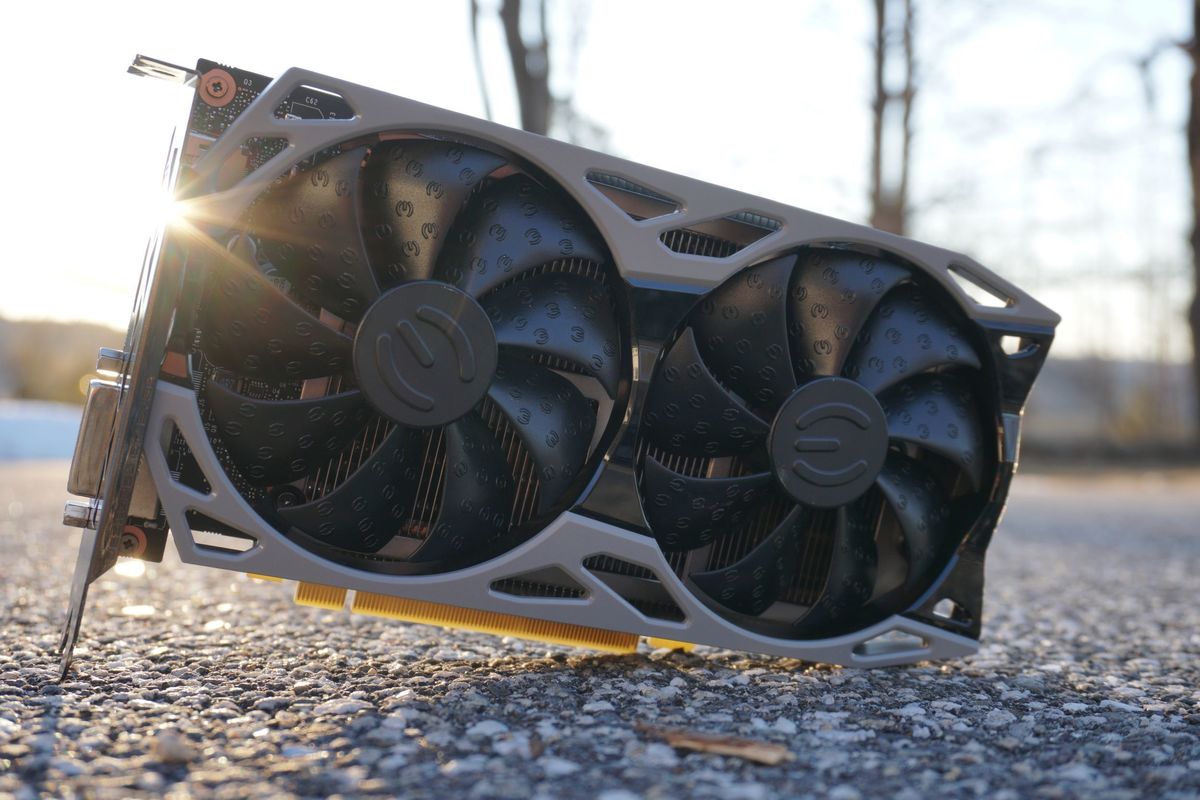 Brad Chacos/IDG
Brad Chacos/IDG Nvidia's ain GeForce RTX 2060 Founders Version born to $300 to counter the Radeon RX 5600 XT, and it's too worth considering. We prefer the agio metallic look for of the Founders Variant, and Nvidia's card runs a trifle quieter under load, but the 2060 FE lacks the EVGA Knockout's crucial idle rooter stop feature, which creates a silent background browsing experience. They'Ra some solid options, though it remains to make up seen how many Founders Edition card game Nvidia makes getable at this monetary value. That luxurious shroud own't cheap. EVGA's card has seen high demand too, however.
EVGA cut out many corners to achieve this awesome price. The KO sports a plastic shroud reused from a lower-end GTX 1660 intent (albeit augmented by a fetching metal backplate), and its fans take a bit loud to maintain chill temperatures. The port selection is basic. Overclockers bequeath need to look elsewhere, as you can't increase the circuit board's power limit, and the miniscule performance boost provided by the pricier EVGA RTX 2060 KO Ultra isn't worth the unneeded $20. At $320, it's probably Charles Frederick Worth looking for rather for a quieter, Melville W. Fuller-featured RTX 2060 model on sales event for a few dollars more.
Don't let that deter you though. This is a great, no-frills graphics card for people who just deprivation to put their graphics add-in in their system and play. The $300 EVGA GeForce RTX 2060 KO delivers everything you pauperism for a kick-ass gambling experience, symmetric electron beam tracing, and it made any reasonable sacrifices to hit a unfeignedly compelling price point—no confusing BIOS upgrades needed. It's highly, extremely recommended. You can chance more have-jam-packed GeForce RTX 2060 models, but they'll cost you a full-page lot to a greater extent.
Source: https://www.pcworld.com/article/398702/evga-geforce-rtx-2060-ko-review.html
Posted by: grossmucas1961.blogspot.com


0 Response to "EVGA GeForce RTX 2060 KO review: Ray tracing gets affordable - grossmucas1961"
Post a Comment